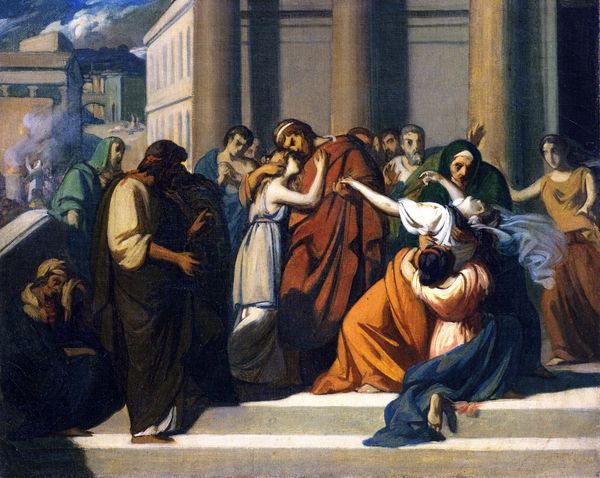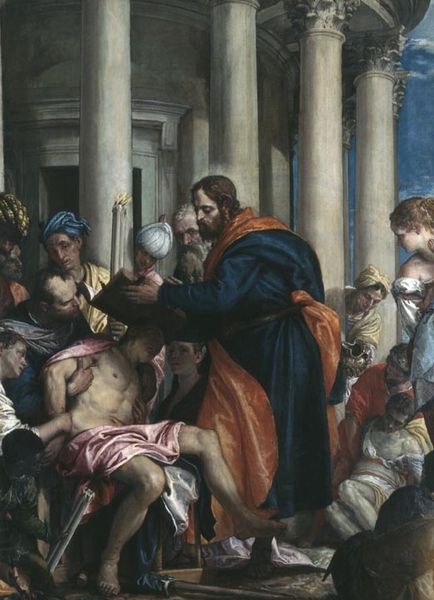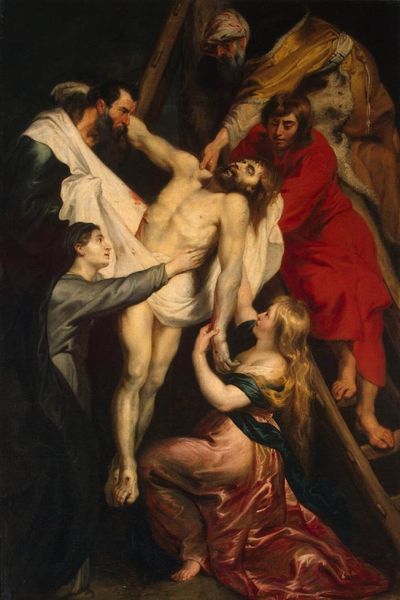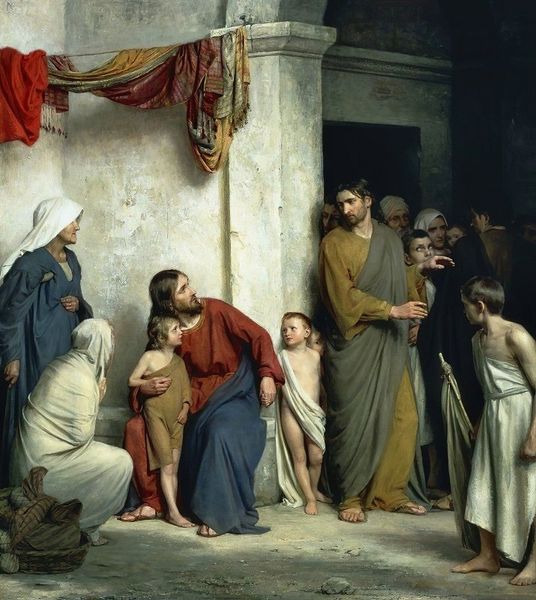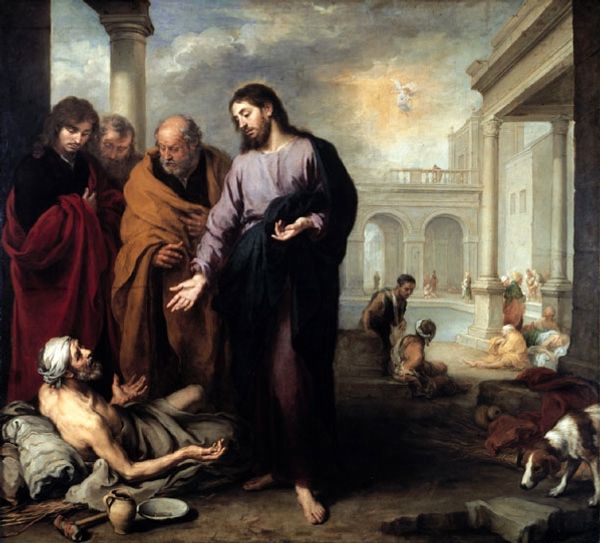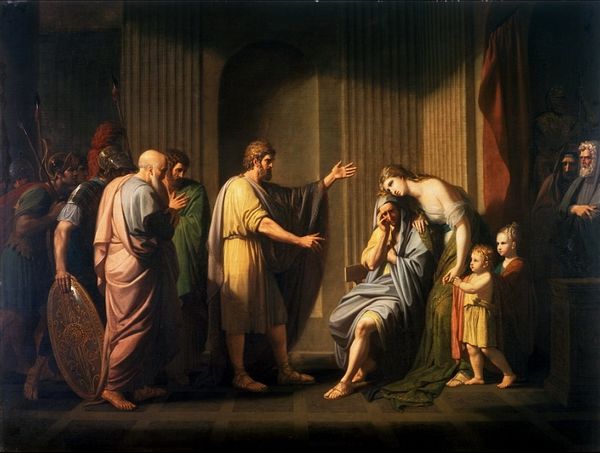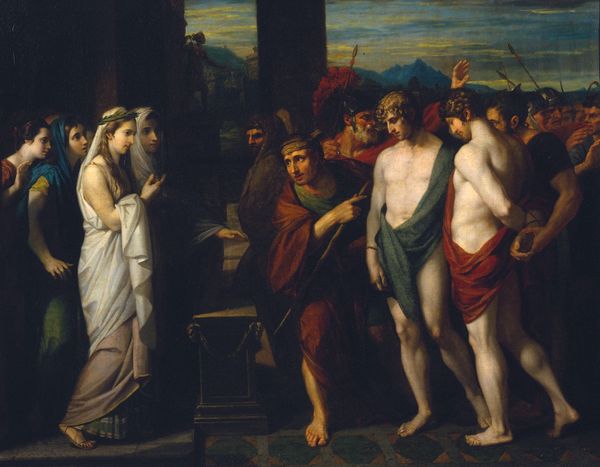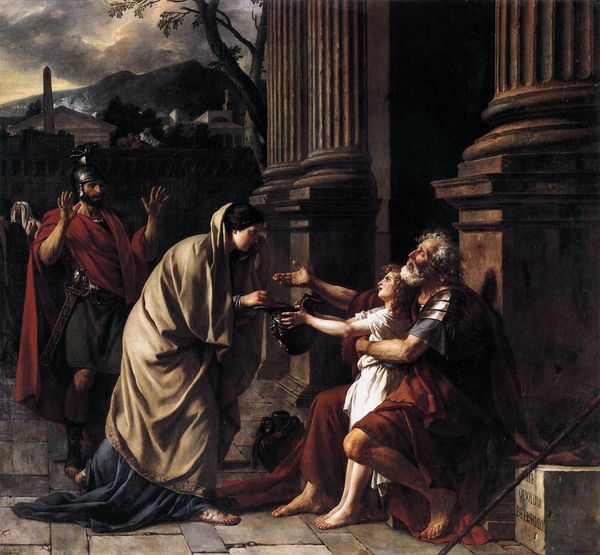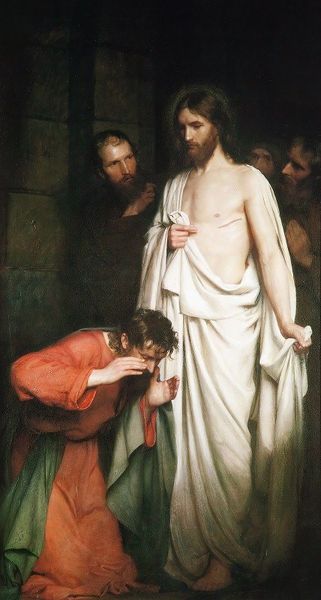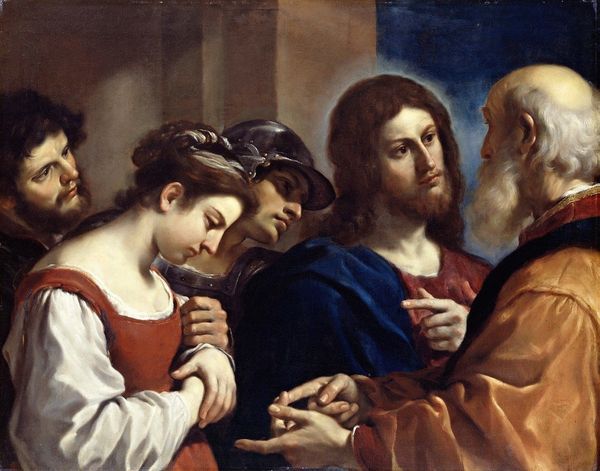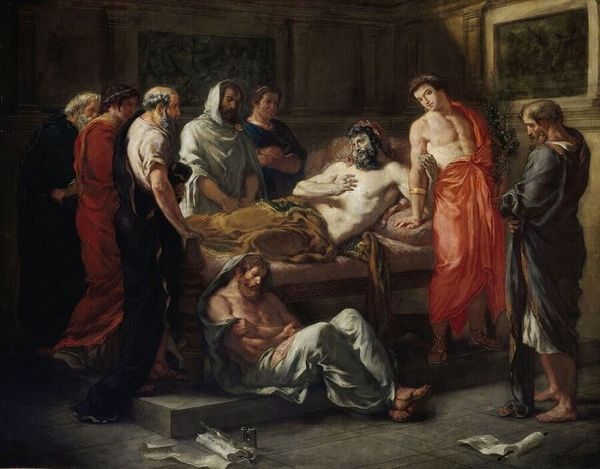
painting, oil-paint
#
narrative-art
#
painting
#
oil-paint
#
figuration
#
oil painting
#
romanticism
#
history-painting
#
academic-art
#
portrait art
Copyright: Public Domain: Artvee
Editor: This is John Trumbull's "The Woman Taken in Adultery," painted in 1811 using oil paint. It strikes me as a powerful and somewhat theatrical scene. The contrast between the pleading woman and the judgmental crowd is palpable. What do you see in this piece, particularly concerning its historical context? Curator: This painting reveals much about the social anxieties of the time. Trumbull, having witnessed the revolutionary spirit in America and France, likely saw this biblical story as a parable about judgment, forgiveness, and social order. Notice how Christ is positioned, seemingly shielding the woman, questioning the very authority that seeks to condemn her. How does that placement, against the imposing architectural backdrop, inform your understanding? Editor: I hadn't considered the architectural context so directly. The structure almost seems to represent the established societal rules, whereas Christ seems to offer an alternative. Were there any contemporary debates about public morality that Trumbull might have been referencing? Curator: Absolutely. The early 19th century witnessed rising debates about moral codes and social justice, even questioning who has the power to judge and enforce moral laws. Trumbull positions Christ as a figure challenging traditional patriarchal authority and questioning legalistic applications of scripture. The politics of imagery were very deliberate; do you think Trumbull succeeded in this intent to convey the narrative with contemporary relevance? Editor: I see that. Looking at the painting now, I notice a subtle questioning of established power. It makes me wonder if his intention was to inspire dialogue, challenging his audience's perception of societal judgment. Curator: Indeed. This painting invites reflection on our own judgments and the role of institutions in shaping our moral understanding. Trumbull used history to provoke a very contemporary discussion. Editor: I now view the painting with an increased appreciation for the embedded commentary on the sociopolitical norms. Thank you. Curator: My pleasure; seeing historical reflections through the lens of art history helps us unpack its layers.
Comments
No comments
Be the first to comment and join the conversation on the ultimate creative platform.
